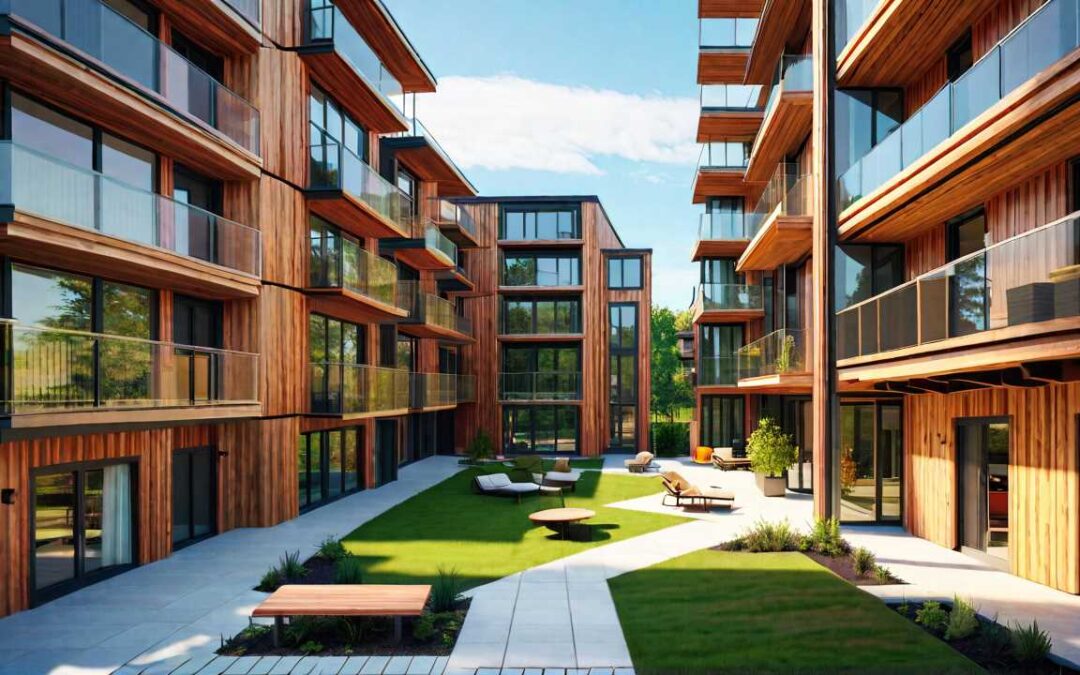In a significant code update, Ontario’s Ministry of Municipal Affairs and Housing will soon amend its Building Code, allowing Encapsulated Mass Timber Construction (EMTC) buildings to soar up to 18 stories—6 stories higher than the current limit.
The Ontario Forest Industries Association Applauds Government’s Decision
Ontario’s forest products industry is welcoming the government’s move to allow mass timber building technology.
For example, Ian Dunn of the OFIA comments,
“The Ontario Forest Industries Association (OFIA) applauds the government’s decision to expand the use of advanced wood construction, like mass timber, allowing for buildings up to 18 stories. This move will not only accelerate home construction and reduce costs but also support forestry, technology, engineering, and manufacturing sectors. Using more wood in construction aligns with Ontario’s Forest Sector Strategy, promoting sustainability and economic growth. This initiative will benefit Ontario’s economy, environment, and communities.”
Ian Dunn of the OFIA
This is the newest development capping off the Government’s interest in this industry over the years.
Why the Change?
“Modern building techniques, including mass timber and modular construction, are part of our multi-pronged approach to boost housing supply and make homes more affordable. Our government will continue to execute comprehensive housing initiatives that include smarter planning, less red tape, housing-enabling infrastructure investments and working with our partners to unlock the potential of high-speed homebuilding technologies to create sustainable communities for everyone,”
Rob Flack, Associate Minister of Housing
After two months of deliberation, the authorities concluded that this adjustment would provide several advantages including:
- Support for Industrialized Approaches and Sustainable Infrastructure: The increase in height for mass timber construction will also support greater adoption of industrialized approaches, utilizing factory-built benefits that can expedite the supply of critical infrastructure in a sustainable way. This move is in line with the government’s goal of cutting red tape to increase housing supply and get construction projects started more quickly.
- Environmental Solution with Fire and Structural Protection: The Ministry of Municipal Affairs and Housing highlighted the benefits of Encapsulated Mass Timber Construction, which offers an environmental solution for quieter and faster construction while providing the same fire and structural protection as other building methods. The use of prefabricated factory-made housing in mass timber construction allows for faster and more efficient construction, with smaller buildings being completed in a matter of days.
- Opportunity for High-Performance, Low-Carbon Wood Construction: The expanded provisions for mass timber construction in Ontario will enhance innovation in the province, offering designers, developers, and municipalities the opportunity to pursue high-performance, low-carbon wood construction in a greater number of buildings. This has the potential to expedite the delivery of essential housing while fortifying the Ontario economy and supporting local industries and workers.
- Meeting Housing Needs and Supporting the Forest Sector: The use of mass timber in construction meets the same structural, fire protection, and seismic performance standards as traditional materials like concrete and steel. Natural Resources and Forestry Minister Graydon Smith highlighted that advanced wood construction will bring long-term investments to northern communities, creating new jobs and supporting Ontario’s largest renewable natural resource sector.
Similar efforts have been made in other municipalities. For example,
The forestry sector in Ontario plays a crucial role in the economy, generating substantial annual revenue and employment opportunities. The growth of mass timber construction is anticipated to enhance this contribution, aligning with sustainable building practices and more efficient construction methods.
